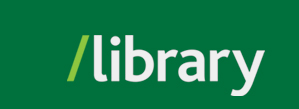Child labour is still an issue for many children and families around the globe. According to UNICEF (2021), there are 160 million children forced into labor in 2021. The International Labour Organization (2020) stated that covid-19 has made the risk factors for child labor (such as poverty, access to education, and discrimination) more extreme. Child labour is more likely to affect boys, and the most dominant area to find child labourers is the agriculture sector (UNICEF, 2021).

Image used under license: CC BY 4.0, https://data.unicef.org/resources/child-labour-2020-global-estimates-trends-and-the-road-forward/
Sources:

The book not only provides the first comprehensive, practical introduction to the history and present-day reality of child exploitation and supply chain issues, but it also traces the interconnected web of domestic and transnational federal laws and law enforcement efforts launched in response thereto.

This book explores core contextual themes surrounding the commission, response to and origins of child trafficking, and presents empirical research into the investigation of child trafficking within the EU, situating the authors’ findings against broader social, cultural, political, policy and judicial contexts.
Drawing on focus group and interview research with 72 practitioners and covering the cases of 37 individuals, Trafficked Young People explores the way child care practitioners identify, understand and work with the problems faced by people who have been trafficked.

This book provides the first comprehensive account of the widespread but neglected global phenomenon of child migration, exploring the complex challenges facing children and adolescents who move to join their families, those who are moved to be exploited, and those who move simply to survive.

Basing her observations on research with 140 children, most of them girls, from countries all over the globe, Gozdziak debunks many myths and uncovers the realities of the captivity, rescue, and rehabilitation of trafficked children.

This book critically examines socio-political constructions of risk related to sexual offending behaviour by and among children and young people and charts the rise of harmful sexual or exploitative behaviour among peers, drawing on a range of theoretical frameworks and primary research.
The UFV Library has a vast collection of print and electronic books and videos for students to use for their studies. Remember: when accessing resources off-campus, users will be prompted to enter their UFV credentials to gain access. For tips on searching for books and videos, check out the LibGuides linked below.
[Note: We are working to improve access to our collections and revising our subject headings to be more respectful and inclusive. Please be aware that you may see certain words or descriptions in search results or library materials which reflect the author’s attitude or that of the period in which the item was created and may now be considered offensive.]
Example subject searches (click on the links to see the lists of related books and videos):
Databases are collections of different types of sources (usually digital) such as:
Here are a few databases to try searching for child trafficking information.
For more information on types of sources (including scholarly articles), please review our Evaluating Sources LibGuide and make sure to check your assignment instructions before your start your research to see what types of sources your professor has asked you to use for your project(s).
The following strategies can be useful to help you search for and choose an academic/scholarly research article
1. Analyze your topic statement for search terms
2. Connect different concepts with "AND"; connect similar (or synonymous) concepts with "OR" You also need to use quotation marks to search complete phrases.
e.g. Child Trafficking AND United States
e.g. Child OR minor OR youth
3. Use limiters (options on the left or right side of the search results) to narrow your results list such as publication dates, peer-reviewed, and full text
4. Be sure to read the abstracts - they will often reveal enough "clues" to tell you if the article is relevant or not.
5. If you do not find articles that interest you, look at your results. See if there are new words or new search terms that you can use that will help you improve your search.
Users can look for videos from the library homepage, or go to one of the Library's video databases. For more information on finding videos please see our Streaming Videos LibGuide. See below for a sample of related videos:
© , University of the Fraser Valley, 33844 King Road, Abbotsford, B.C., Canada V2S 7M8

